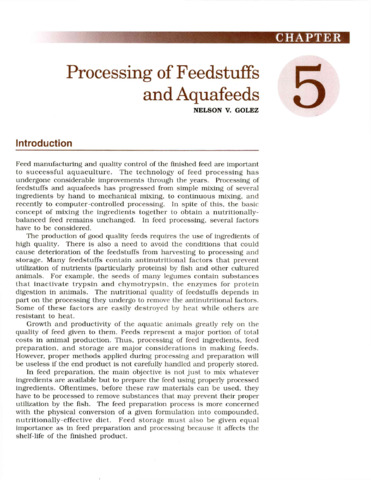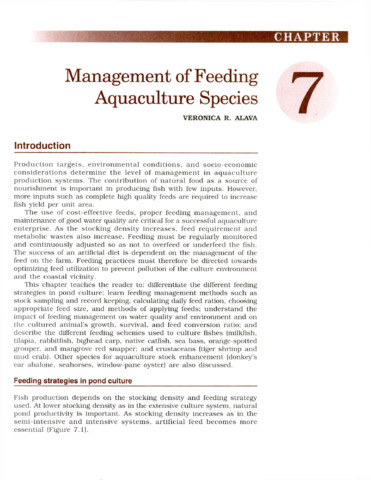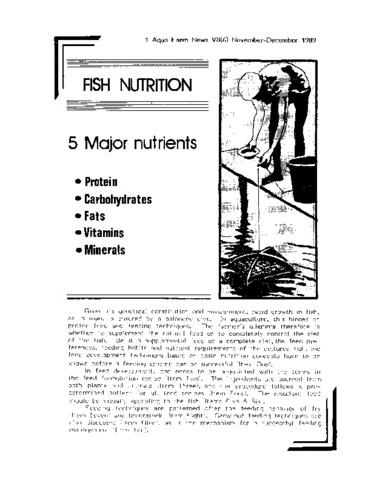FAO policies and initiatives promoting responsible and efficient use of feed ingredients from marine animal origin
- Global styles
- MLA
- Vancouver
- Elsevier - Harvard
- APA
- Help
Share
Abstract
After rapid development for three decades, aquaculture has become the most important source of food fish in Asia, which currently supplies about 55 per cent of food fish for the people. The rapid growth of aquaculture production has been largely the result of intensification of aquaculture, which heavily relies on artificial feeding. The development of shrimp and high value marine and inland finfish culture has greatly increased the demand for feed ingredients from animal sources, particularly fish meal and fish oil and low value fish as direct feed. Due to various factors, the production of fish meal from whole fish has, overall, declined gradually since 2005 despite some fluctuations. This decrease has been only partly offset by a growing share of fish meal production obtained from fishery by-products. In contrast, the overall demand for fish meal continued to grow, pushing prices to historic high at US$1,919 per mt in January 2013, with an increase of 206 percent between January 2005 and January 2013. The soaring price of fish meal and fish oil has significantly affected the economic return from farm production that relies on the feed with high content of fish meal and fish oil or direct use of low value fish as feed. Furthermore, the increasing use of fish meal and fish oil from whole fish that can be direct source of animal food for people has raised major public concerns.
Due to the population and economic growth, it is projected that in 2030 the Asia-Pacific region will need to increase fish production by 30 million mt, mainly through aquaculture. With the on-going process of aquaculture intensification and potential increase of high value commodities that require high protein in feed, it is anticipated that demand of Asian aquaculture for feed ingredients, particularly the protein source, will continue to increase. With the stagnant capture fish production and potentially more production to be directed for direct consumption by people, there will be a gap between the demand for feed ingredients and the supply of traditional sources such as fish meal, fish oil and fresh/frozen low value fish. How effectively the gap can be filled might determine the future of the aquaculture industry and whether the increasing demand of people for fish can be met effectively. Therefore, responsible and effective use of feed ingredients from animal sources of marine origin is the key to achieve sustainable growth of aquaculture for food security and nutrition, livelihood development and economic growth in the region.
This paper provides a global and regional picture of use of marine origin animal feed and feed ingredients in aquaculture. It also briefly discussed major issues on the use of marine origin animal feed and feed ingredients in aquaculture. It briefly introduced the FAO policy and its global and regional initiatives that promote responsible and efficient use of feed ingredients from marine animal origin.
Suggested Citation
Miao, W., Hasan, M., & Funge-Smith, S. (2015). FAO policies and initiatives promoting responsible and efficient use of feed ingredients from marine animal origin. In M. R. Catacutan, R. M. Coloso, & B. O. Acosta (Eds.), Development and Use of Alternative Dietary Ingredients or Fish Meal Substitutes in Aquaculture Feed Formulation : Proceedings of the ASEAN Regional Technical Consultation on Development and Use of Alternative Dietary Ingredients or Fish Meal Substitutes in Aquaculture Feed Formulation, 9-11 December 2014, Nay Pyi Taw, Myanmar (pp. 109-119). Tigbauan, Iloilo, Philippines: Aquaculture Department, Southeast Asian Fisheries Development Center.
Type
Conference paperISBN
9789719931058
Related items
Showing items related by title, author, creator and subject.
-
Processing of feedstuffs and aquafeeds
Golez, Nelson V. (Aquaculture Department, Southeast Asian Fisheries Development Center, 2002)This chapter will help the reader understand and appreciate the basic principles of processing, preparation, storage, and quality control in the preparation of aquafeeds. The material in this section is presented in sequence ... -
Management of feeding aquaculture species
Alava, Veronica R. (Aquaculture Department, Southeast Asian Fisheries Development Center, 2002)This chapter teaches the reader to: differentiate the different feeding strategies in pond culture; learn feeding management methods such as stock sampling and record keeping, calculating daily feed ration, choosing ... -
Fish nutrition
Carreon-Lagoc, Julia; Southeast Asian Fisheries Development Center, Aquaculture Department (Aquaculture Department, Southeast Asian Fisheries Development Center, 1989)






